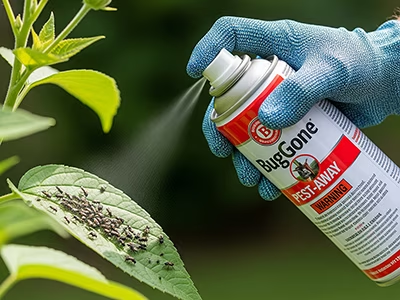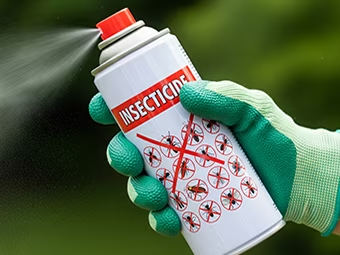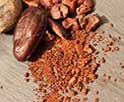The Most Dangerous Insecticides in Your Home and How to Avoid Them
A Homeowner's Guide to Toxic Pesticides: What to Look for and Safer Alternatives
Reading time : 1 minute,
Discovery Chepe Id-795-SAL
Published in
08-27-2025

A man sprays insecticide in his garden, unaware of the potential health and environmental risks hidden in common household chemicals.
In many homes around the world, insecticides are seen as a quick solution to deal with mosquitoes, ants, cockroaches, or other unwanted pests. However, not all insecticides are created equal. Some of the products people use daily carry hidden dangers that may affect not only insects but also human health and the environment. Knowing how to identify these chemicals, understanding their risks, and exploring safer alternatives is essential for every household.
1- Organophosphates: highly toxic compounds
Originally developed for agriculture, organophosphates are sometimes found in household pest control sprays. They affect the nervous system and can be harmful even in small doses. Long-term exposure has been linked to neurological disorders and developmental problems in children.

Are Your Household Insecticides a Threat? The Dangers of Common Bug Sprays
2- Pyrethroids: common but not always safe
Pyrethroids are among the most popular active ingredients in household insecticides. While marketed as safe, studies suggest they can trigger allergies, asthma attacks, and in some cases, affect the endocrine system. Vulnerable groups such as children and pets are particularly at risk.
3- Carbamates: a hidden danger indoors
Carbamates interfere with the same biological pathways as organophosphates. Although less toxic in small amounts, repeated exposure can weaken the immune system and damage internal organs over time.
4- Fumigation products and mosquito coils
Products like mosquito coils release smoke that contains fine particles and chemical residues. In poorly ventilated spaces, they can increase the risk of respiratory infections, chronic coughing, and in some cases, cancer. According to the U.S. Environmental Protection Agency, prolonged exposure to such emissions should be avoided inside homes.
What makes these insecticides dangerous?
a) Direct toxicity: Even short-term exposure may cause nausea, headaches, skin irritation, or dizziness.
b) Long-term health risks: Studies have linked repeated exposure to neurological damage, hormone disruption, and fertility issues.
c) Environmental harm: Many of these chemicals contaminate water sources, harm pollinators, and persist in the ecosystem far longer than expected.
Safer alternatives you can use at home
1- Natural repellents: Essential oils like citronella, eucalyptus, and lavender can repel insects without releasing toxic chemicals.
2- Physical barriers: Window screens, mosquito nets, and sealing cracks reduce pest entry naturally.
3- Homemade solutions: Vinegar sprays, baking soda mixtures, or soap-water sprays are effective against ants and other pests.
4- Integrated Pest Management (IPM): This method combines sanitation, natural predators, and limited pesticide use only when absolutely necessary. More details can be found through the University of California Integrated Pest Management Program.
Key recommendations from experts
a) Always read the label and instructions before using any insecticide.
b) Avoid spraying in closed or poorly ventilated areas.
c) Keep products away from children and pets.
d) Choose certified eco-friendly or low-toxicity products whenever possible.
Household insecticides may seem like a fast solution, but many carry silent dangers that put health and the environment at risk. By identifying the most dangerous types, understanding their risks, and adopting safer alternatives, families can protect themselves while keeping pests under control. Sometimes, the best protection is not in the spray can, but in prevention, knowledge, and safer choices.
See Also
Discovery Chepe
Most read...















